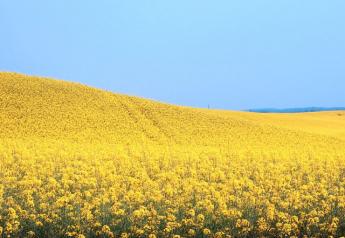If You Think the Wind is Worse Than Normal This Year, Data Proves You're Right

Farmers and ranchers have had to endure high winds for months. The powerful gusts haven’t just been annoying; it’s caused disasters across the U.S. High winds have been the culprit of wildfires and more.
High winds and eerily dry conditions across Kansas and the Southern Plains have created what’s been a battleground for continuous wildfires this year. The drought-plagued area was already showing severe signs of what little to no rain-fed water will do, but fires are also robbing ranchers of vital grass.
Cooper and Chelsea Adams are the fifth generation of the Adams family to run cattle in the southwest corner of Kansas. What is typically a lush landscape for cattle ready to graze is now a backdrop covered in dirt and ashes.
“That fire was roaring so fast, 60- to 70-mile an hour gusts that day they said, it had already covered one entire pasture by the time I get down there,” says Cooper Adams.
The April fires are only a sample of wildfires that have continued to pop up across the Plains. High winds and dry conditions also resulted in multiple wildfires in western Kansas in December.
Bar S Ranch homes and personal belongings, along with around 200 head of cattle, other structures on the ranch and 40-miles worth of fence during the December fires. The family believes downed power lines from strong winds sparked a fire that changed their lives.
Stories like these can be found from Texas to North Dakota.
“Yes, it has been windier than normal this month across the nation’s mid-section,” says Brad Rippey, USDA meteorologist. “Wind data is a little harder to come by, compared to temperatures and precipitation. However, I have some numbers for Dallas-Ft. Worth (DFW), Texas. Through April 24, the average wind speed at DFW was 15.9 mph. Average for DFW in April is 12.2 mph. That works out to about 30% above the April average. April record for DFW was 17.2 mph in 1951. “
Those on the Plains are used to wind, but this year has been especially bad. 70 MPH winds may have wiped out the remaining winter wheat in the Texas Panhandle this month.
"The wheat crop that was out there was just living off of the little bit of moisture that was in the ground, and we haven't had any moisture to help with that at all,” says Jesse Wieners farms in Groom, Texas. “Now we're at that stage where the little bit of wheat that was there has blown out and is pretty much non- existent. We've been seeing zero-bushel yield across the farm on a lot of stuff. It just is not looking good right now.”
The aftermath of Tuesday's winds were evident, with dirt drifts piled up in ditches. Farmers have battled multiple wind events already this year, along with intensifying drought. The situation has hammered the crop planted last fall, with the majority of the dryland winter wheat crop across the Panhandle and southern Plains already zeroed out by crop adjusters.
“Some of the blame for the high winds can be attributed to La Niña,” says Rippey. “With a La Niña-driven storm track over the last several weeks, several very strong storms have emerged from the western U.S. and crossed the northern or central Plains.”

Rippey says this satellite image of the weekend storm, dated April. He says those storms have generated considerable wind in the Southwest and throughout the Great Plains.
“In drought-affected areas, this has led to blowing dust, fast-spreading wildfires, and further deterioration of wheat and pasture conditions,” he adds.







